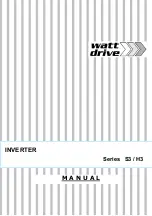
AD122-96 MX
Appendix II
16
Appendix II: AD122-96 MX Input Considerations
Achieving 20 or more bits of resolution places a heavy demand on the linearity and noise of analog
signals prior to the A/D conversion.
Linearity:
Linearity problems (typically associated with larger signals) should be avoided to prevent
overall signal distortions. Proper circuit design places non-linear devices inside a negative feedback
path, thus allowing the transfer function to depend on a few linear components (such as resistor ratio).
Closer examination reveals that the effectiveness of negative feedback is limited by the open loop gain
of the amplifier (the available gain prior to the feedback action). Constructing a 10dB gain stage out of,
say, a 50dB open loop amplifier provides 40dB of feedback; thus, circuit nonlinearities are corrected
for by a factor of 100. A 1% nonlinearity reduces to a .01% level. The same stage, when set to a gain of
20dB, yields only 50-20=30dB of "linearizing power"; thus the same 1% circuit nonlinearity is
corrected to 1/31.6 = .03%. The "obvious" solution of increasing circuit open loop gain is riddled with
problems ranging from impulse response settling time to loss of bandwidth.
Noise:
The quantization (A/D conversion) of analog noise causes loss of fine signal detail. The
quantized noise introduces time varying signal dependent distortions. Such sample by sample deviation
can not be compared to the seemingly "constant" analog background noise. The interaction between the
noise and the quantization process effects the sonic detail at much higher amplitude than the noise level
itself. The source material may have its own noise level, but the A/D manufacturer is in no position to
decide which part of the material is signal and which part is noise. (Is it undesirable noise or is it the
intentional recording of the wind blowing through the trees?) Thus, any signal must be reproduced
accurately. All we can do, and all we should do amounts to avoiding additional A/D noise. A/D noise
consists of two parts: analog noise (prior to quantization), and quantization noise. The quantization
noise level is "fixed" by the converter itself.
Model AD122-96 MX
quantization noise relative full
scale is about 126dBFS. Keeping complete system noise level at 126dBFS requires careful treatment of
the analog path. Each circuit component (especially resistors and semiconductors) generates its own
noise. The complex electron motion within the various materials adds up to a cumulative noise.
Intentional amplification of signals yields undesirable amplification of noise. Once again, each dB of
added gain takes away a dB from the available dynamic range.
AD122-96 MX Input Range:
You may suspect by now that our aim is to provide you with an A/D
converter and leave the problem of providing a "hot" signal at the hands of microphone and mic-
preamplifier manufacturers. Like many A/D's,
Model AD122-96 MX
provides limited gain (0-12dB).
There are 4 methods for analog input signal interconnection:
1. Balanced/ grounded shield
2. Balanced/ floating shield
3. Unbalanced/ grounded shield
4. Unbalanced/ floating shield.
Grounded shield:
analog cable shield is connected pin 1 of the XLR at both ends of the cable driver
end and A/D end.
Floating shield
: analog cable shield is connected pin 1 of the XLR only at the driver end of cable. The
shield is floating at the A/D side (not connected to pin 1).






































